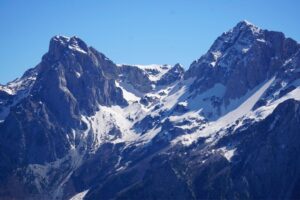
How to hike from Valbona to Theth
Albania | Our guide to hiking from Valbona to Theth; two beautiful traditional villages lying deep in the Albanian Alps
Cradled high in the arms of the Andes mountains lies Quito, the Ecuadorean capital built on the site of ancient Incan ruins. Founded in the 16th century, this sprawling melting pot of historic colonial structures and modern-day skyscrapers stretches out as far as the eyes can see. None more so than from Cruz de Loma, a viewpoint 4,100m above sea-level offering outstanding panoramic views.
Reached by the TelerifiQo (“Telerifico” being the Spanish word for cable car cleverly mixed with Quito), these breathtaking vista’s can be found on the Volcán Pichincha on the Western side of the city and only a short taxi ride away from popular city centre districts including Mariscal Sucre and San Blas. From the minute you ascend 2.5km up the slopes to the moment you depart, it’s impossible to be blasé about the views on show.
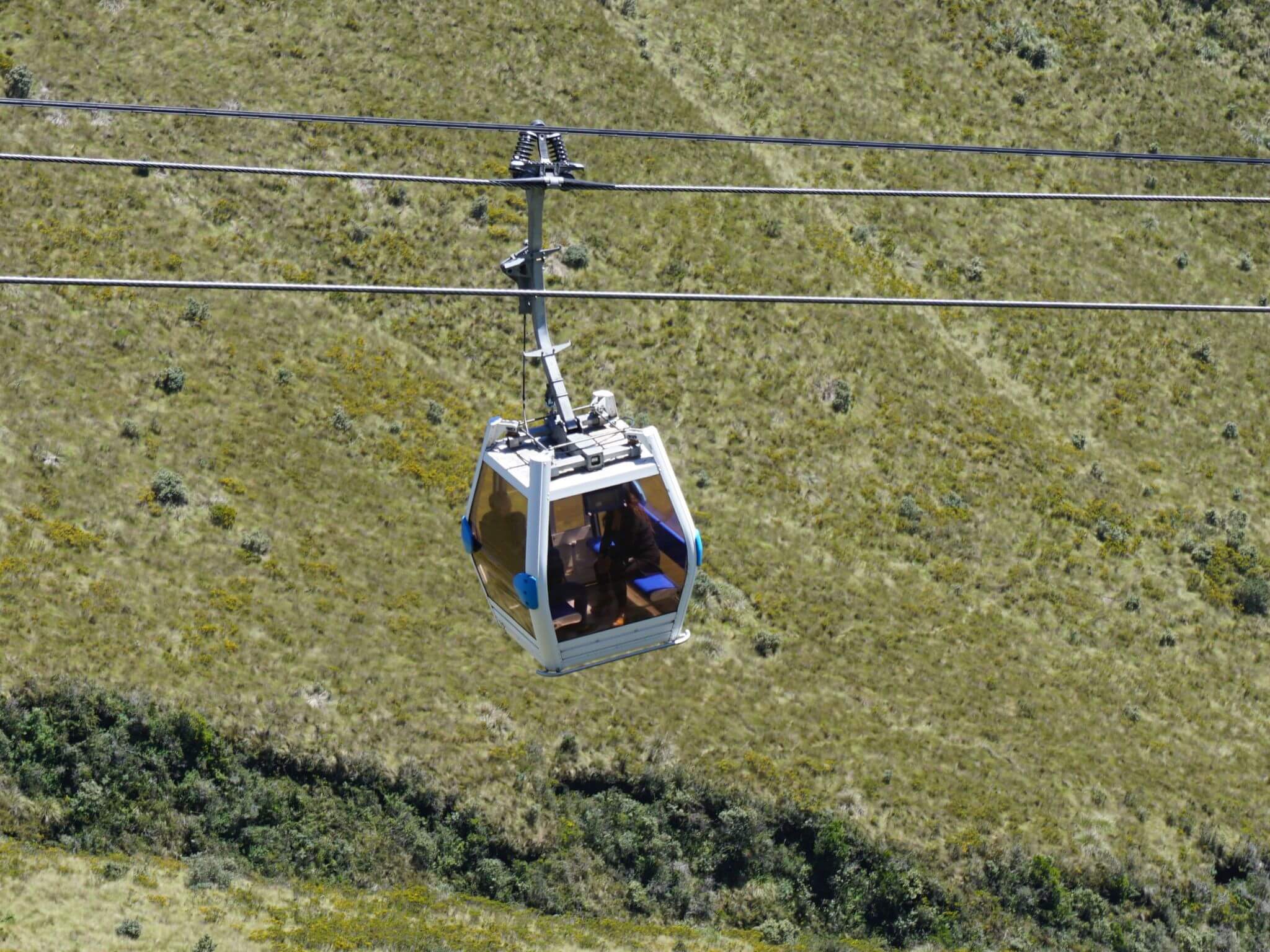
Transport… A taxi is roughly $5.00 to the TelerifiQo and $5.00 back to popular districts such as San Blas and Mariscal Sucre. Ask your hostel or hotel to book via official channels and agree the fare up front prior to departure.
Cost… Tickets for the TelerifiQo cost $8.50 for the return journey to Cruz de Loma station and back.
Bring… A wind-resistant coat or jumper as even on warm days, it can get windy and chilly very quickly. Sunscreen is also a must, alongside plenty of water. Of course, if you’re planning on doing the Rucu Pichincha hike, ensure you have the right hiking equipment such as boots etc.
Tip… If you’re hungry when you reach the top, there is a cheaper alternative to the restaurant above the souvenir shop as you exit the TelerifiQo on the right hand side. Instead, head to your left towards Mirador de los Volcanes where there’s a cosy little cafe next to the cable car exit. The food was much cheaper here and I bought two homemade pieces of banana bread and a pack of cookies for $3.00 – cheaper than one slice of cake on its own for $3.90 in the other place!
Ranked as one of the world’s highest aerial lifts, eyes were ablaze with admiration for the magnificent surrounding landscape. Of course it helped that, having only opened in 2005, the ride was super smooth and stable throughout. With no worries about jolting and swaying, all attention was focused on the scenery. There’s something mesmerising when traversing a mountainside by cable car; maybe it’s the sheer wonder and awe at how nature has been able to carve out such majestic terrain. I had similar thoughts on Prestreljenik in Slovenia. This brought it all flooding back.
We’d decided to get there for around 10:30am, as we knew that the cloud and mist that tend to intrude on Quito’s afternoon sunshine would be rolling in later that day. Upon exiting the station at the top, we took a stroll left over to Mirador de los Volcanes, appreciating the topography of the land combining urban life with the rural slopes of the mighty Andes. On a clear day, from here you can point out the ten volcanoes bordering the capital, serving as a reminder of Quito’s fragility should one catastrophically erupt. We then followed the path around to Mirador de Antennae but truth be told, apart from the obvious radio masts, we didn’t find much there in the way of clear views. It’s probably best to be avoided as you move further on up the mountain.
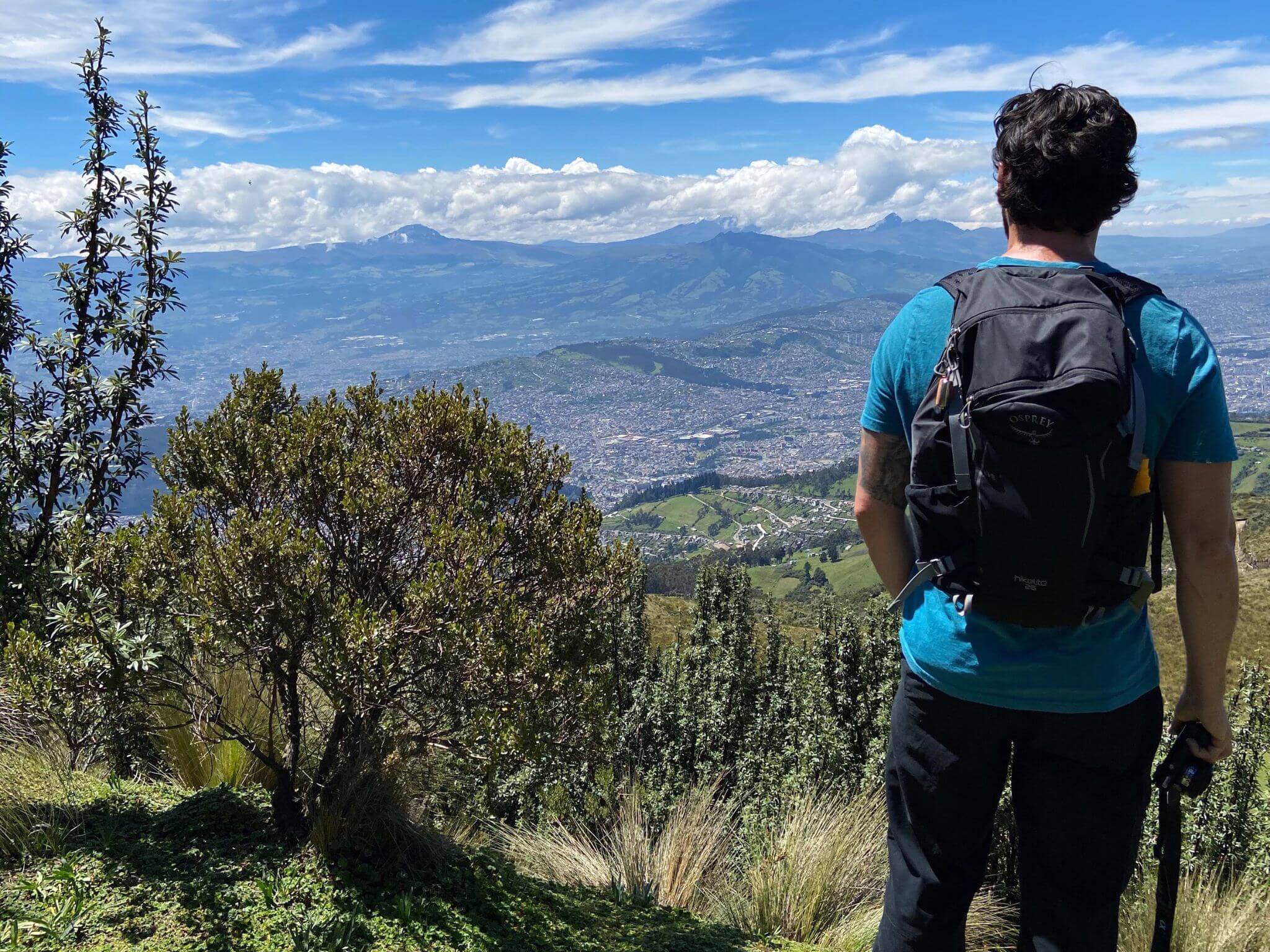
One thing I would say, which has been suggested by a number of articles I’ve read since, is that it is advisable to spend a couple of days in Quito in order to acclimatise first. With the city sitting at a height of 2,850m above sea-level, many travellers coming from the coast or other low-lying areas can quickly feel out of breath when they arrive. This is particularly important if you’re looking to climb up to Rucu Pichincha (4,680m). We’d only arrived the day before and, frankly, didn’t feel up to the task as we’d travelled extensively for the preceding 72 hours. However, I’m told it’s a wonderful hike that is approximately four kilometres and five-hours long offering more dramatic views. Having since read up on this, the advice I’ve seen is to take warm clothes and plenty of water before starting in the morning as the clouds typically arrive come noon. For more information, Just Chasing Sunsets has an excellent guide here.
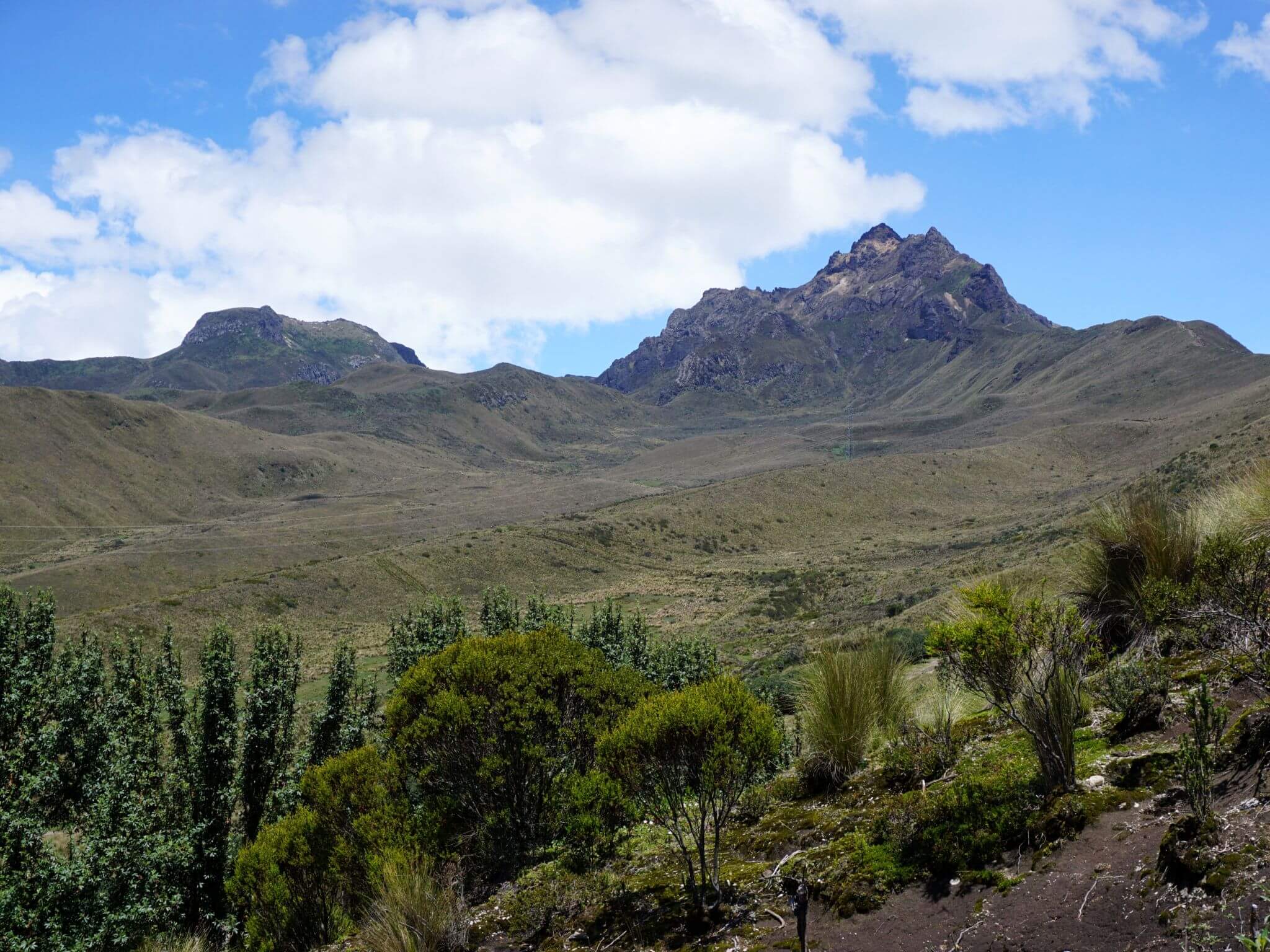
We followed the trail up the hill to the Swing in the Clouds, a popular haunt for visitors to get snapped swinging high above the city skyline. A small group of people waited patiently as the current incumbent had their picture taken flying high through the air but it wasn’t long until we got our opportunity. Pip, Cat and myself took it in turns taking shots as the others bid to get as much height as possible. It’s quite a unique way to take in the vast city lodged tight between the hills standing tall along its border; it was also probably the first time I’ve been on a swing since I was a child so all in all it was good fun!
There’s the option of continuing up the hill where on your right-hand side is a pleasant bench and shelter from where you can admire Quito below. From there on, you can opt to brave the Rucu Pichincha hike if you desire. By this time I felt a little light-headed as looking back, I probably hadn’t fully adjusted to the altitude. A lady was sat in the shade of a single, secluded tree as she sold photo opportunities with an Alpaca tethered beside her as we made our way back down the path. Not something for me personally, but we walked past some tourists who seemed interested enough.
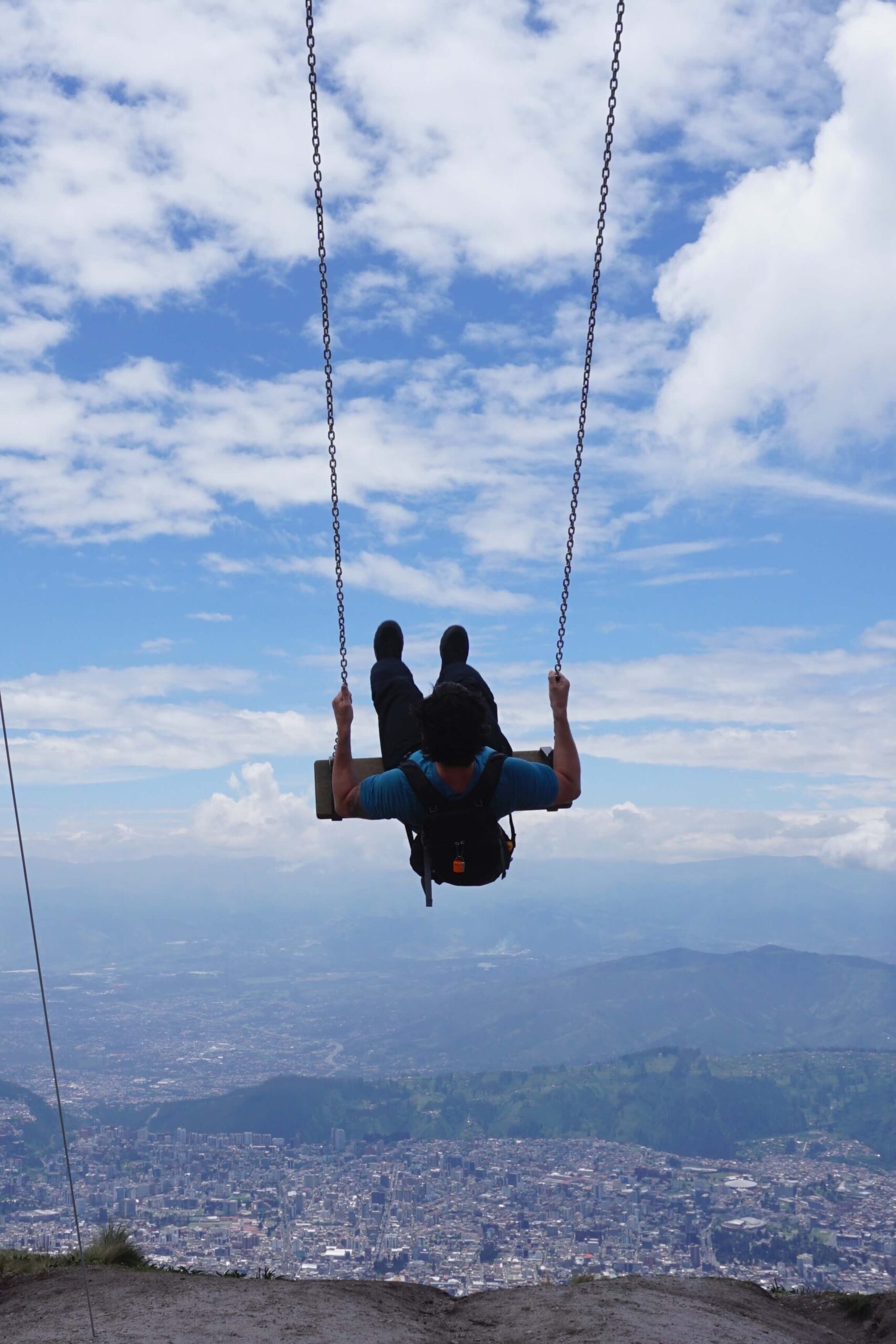
The slow jaunt back down the mountainside afforded us one last opportunity to soak in the beautiful scenery. On reflection, although I only spent a week exploring Ecuador, Cruz de Loma was actually one of the highlights of my six weeks in South America. Apart from Medellín, I’d never been anywhere like it where a city was wedged so high up in the mountains. It was that kind of experience that was exactly why I went to South America – a continent unique, exciting and beautiful.
Tip… In many places in South America, you need to pay to use the public toilet. To avoid getting caught short on the way up Volcán Pichincha, use the free public toilet at the right-hand side of the ticket office.
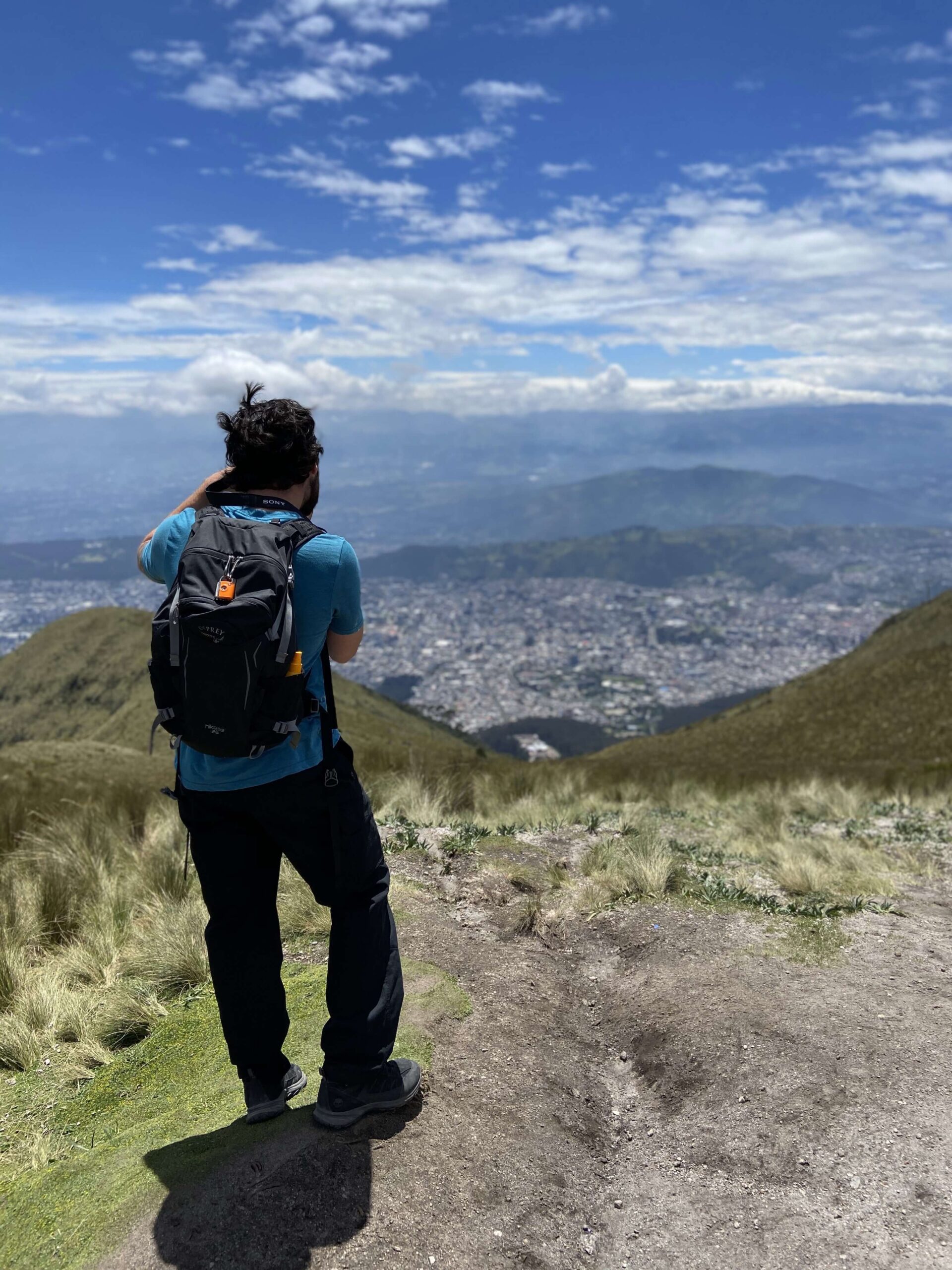
Read more… Quito: The “Light of the Americas”
Share this article with friends on social media…

Albania | Our guide to hiking from Valbona to Theth; two beautiful traditional villages lying deep in the Albanian Alps

United Kingdom | The complete guide to the Birmingham Tolkien Trail; the original Lord of the Rings tour. Discover what inspired J.R.R Tolkien’s fantasy epic!

Depth of Mind is a travel blog providing honest, trustworthy advice to help aspiring travellers achieve an authentic travel experience.
All rights reserved – photography cannot be used without the express permission of the author.
© Depth of Mind 2019-2023
SIGN UP FOR THE NEWSLETTER
